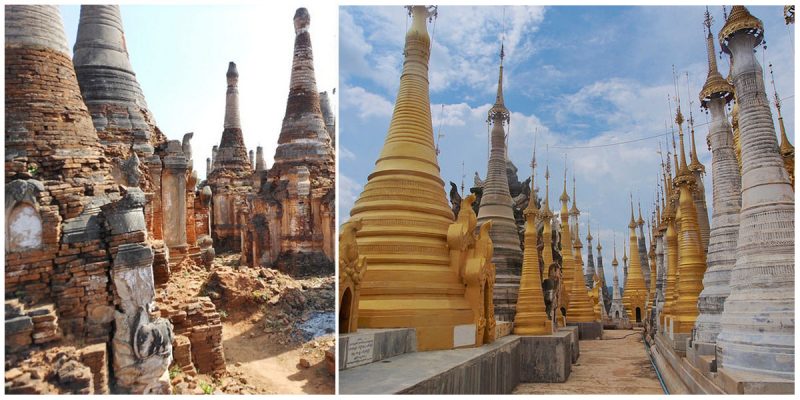On the western bank of Inle Lake, in the middle of Myanmar’s jungles, lies an impressive series of sightseeing objectives with a unique combination of history, complex architecture, and nature. A typical visit to Inle Lake involves visiting the villages around the lake and the floating market. There is a small village which is called Inthein. In the village, there are hundreds of ancient pagodas of many shapes and sizes and in various states of ruin.
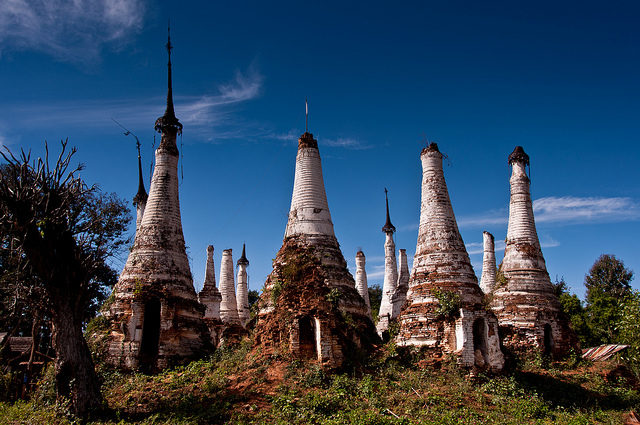
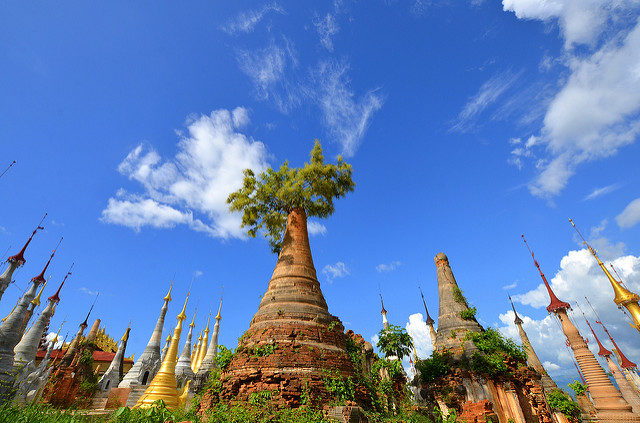
Around Inthein village there are two groups of ancient pagodas, Nyaung Ohak and Shwe Inn Thein. Nyaung Ohak in translation means “group of banyan trees.” Most of the pagodas here have not been restored and are in various states of repair. Some are well preserved, while others have plants and trees growing out of them. The pagodas are decorated with ornate stucco carvings of mythical animals, devas (celestial beings) and chinthe (mythical lions).
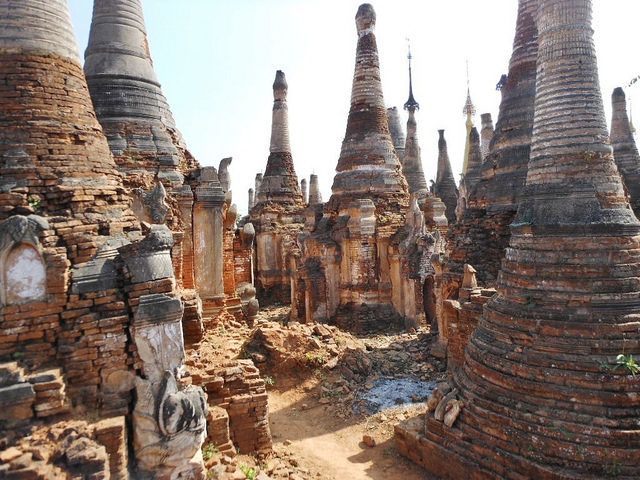
From Nyaung Ohak a climb leads to the second group of pagodas named Shwe Inn Thein located on top of a hill. It is a complex of 1054 weather-beaten zedi (stupas), most constructed in the 17th and 18th centuries. The earliest one with an inscription dates to the 14th century. The walkway is lined with stalls where vendors sell Shan shoulder bags, longyis, shirts and other items.
From the pagoda, there are great views of the lake and the valley. For even better views, there are two more ruined stupas on conical hills north of the village, reached via a dirt path behind Nyaung Ohak.
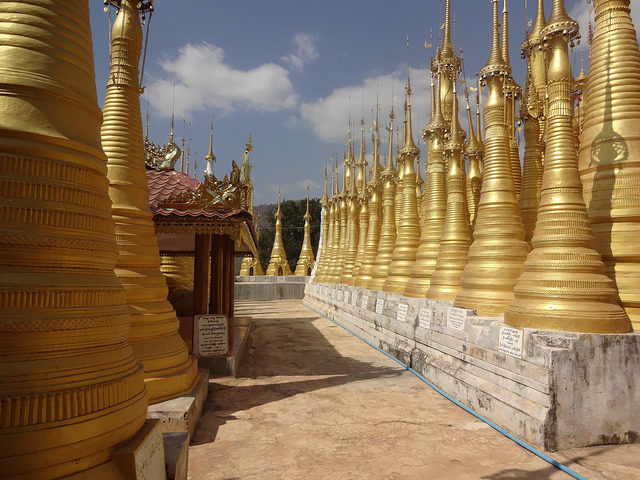
At the center of the Shwe Inn Thein group is the shrine of the Inn Thein Buddha image. The shrine, believed to have been built by King Ashoka, houses a golden Buddha image in the meditation mudra.
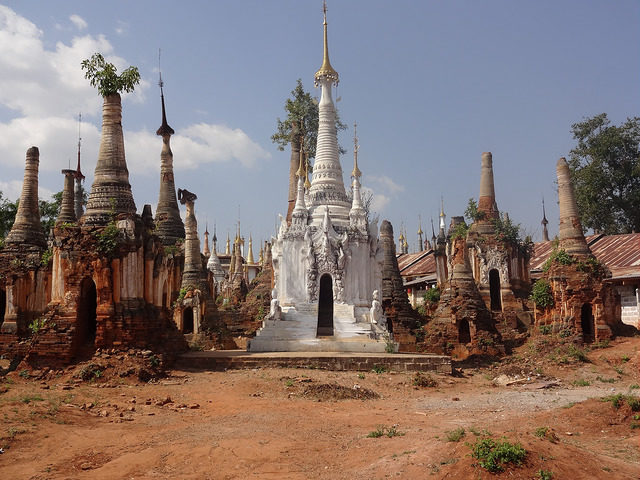
These magical sites with extremely detailed architectural constructions provide any visitors to feel like they are in a fairy tale.
